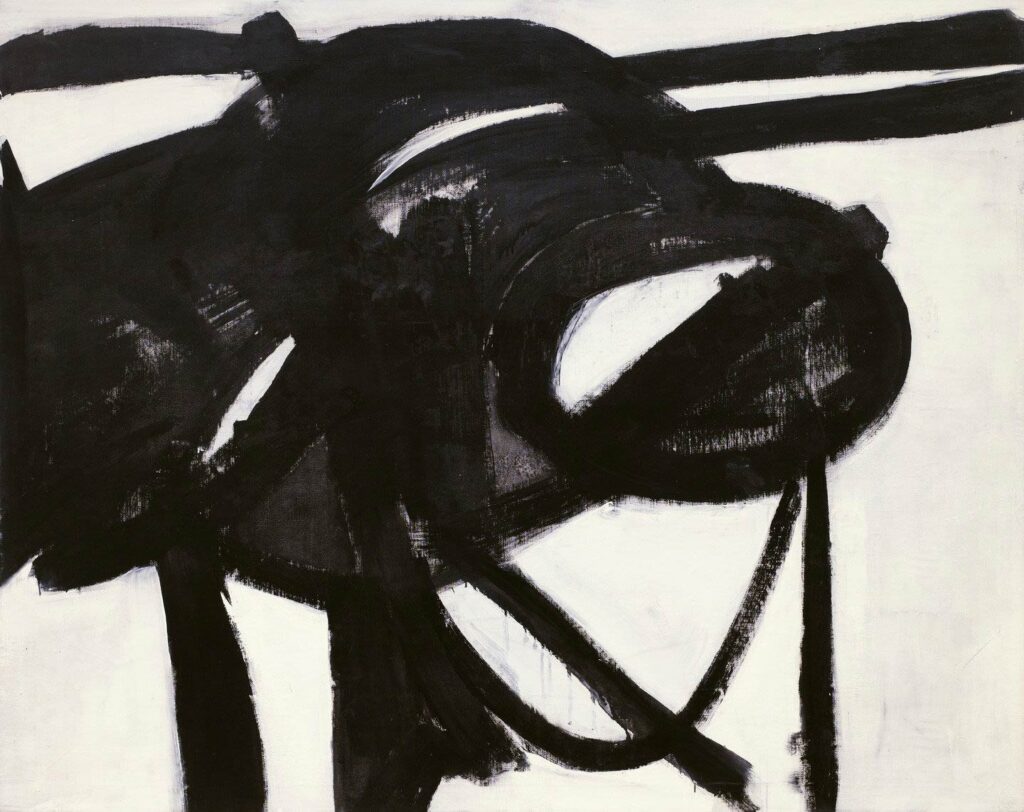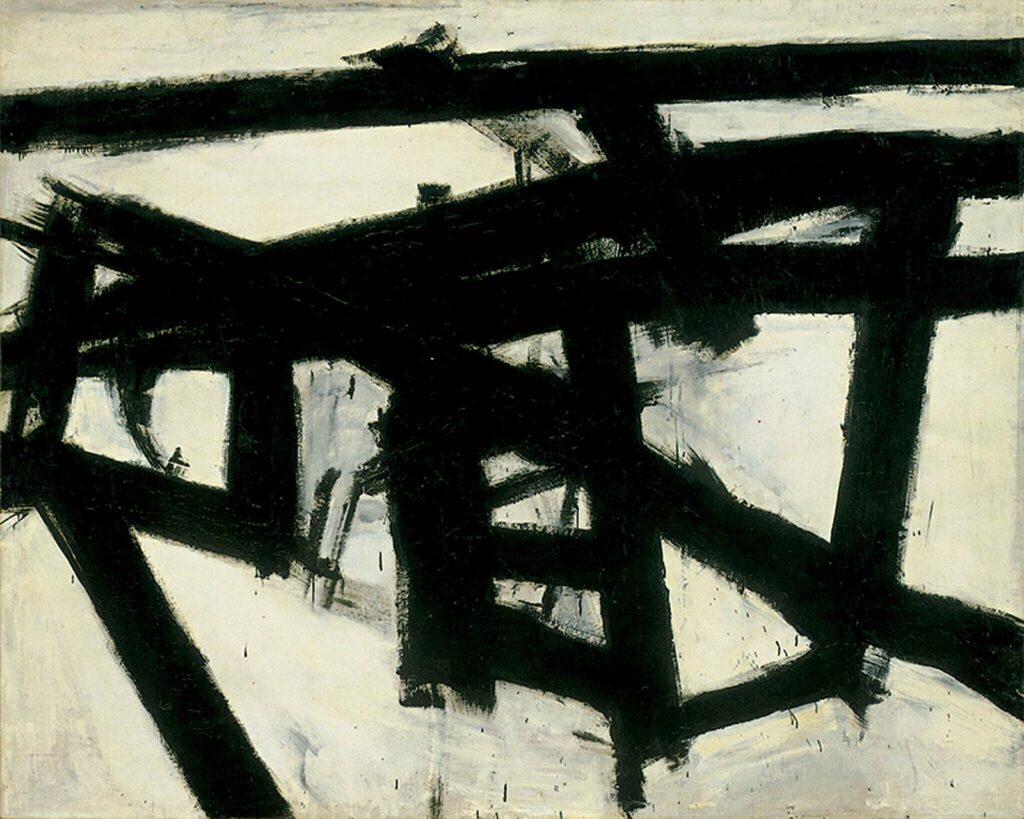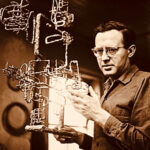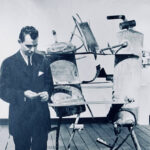Franz Kline
Franz Kline, a leading figure in the Abstract Expressionist movement, is celebrated for his monumental black-and-white paintings that emphasize bold, gestural brushstrokes and dramatic contrasts. His dynamic compositions and innovative approach to abstraction have left a lasting impact on modern art.

Early Life and Artistic Development
Franz Kline was born on May 23, 1910, in Wilkes-Barre, Pennsylvania. He showed an early interest in art and attended Boston University’s School of Fine and Applied Arts, followed by further studies at the Heatherley School of Fine Art in London. Kline’s early work consisted primarily of figurative and representational art, influenced by traditional European styles.
In 1938, Kline moved to New York City, where he became part of the vibrant art scene. He supported himself by working as a commercial artist and mural painter while developing his own artistic style. During this period, Kline’s work was still largely representational, but he began to experiment with abstraction, influenced by the works of European modernists such as Pablo Picasso and Henri Matisse.
Transition to Abstract Expressionism
The late 1940s marked a significant turning point in Kline’s career. A pivotal moment occurred in 1948 when his friend Willem de Kooning projected one of Kline’s small sketches onto the wall using a Bell-Opticon projector. Seeing his work on such a large scale had a profound impact on Kline, inspiring him to explore large-format, black-and-white compositions.
Kline’s transition to Abstract Expressionism was characterized by a shift from figuration to abstraction, focusing on the expressive potential of line and form. He abandoned traditional subject matter in favor of bold, gestural brushstrokes that conveyed a sense of energy and movement.
Notable Works
1. “Chief” (1950)
“Chief” is one of Kline’s most iconic paintings, exemplifying his mature style. The work features dynamic, black brushstrokes on a white background, creating a composition that is both powerful and expressive. The bold, gestural marks suggest a sense of immediacy and spontaneity, capturing the physical act of painting.
The title “Chief” reflects Kline’s interest in the American industrial landscape and the powerful, machine-like forms that characterize his work. The painting’s dramatic contrasts and monumental scale invite viewers to experience the raw energy and emotion of Kline’s creative process.

2. “Mahoning” (1956)
“Mahoning” is another significant work in Kline’s oeuvre, notable for its complex composition and dynamic interplay of black and white. The painting’s title references the Mahoning Valley in Pennsylvania, reflecting Kline’s connection to the industrial landscape of his youth.
The intricate network of bold, intersecting lines in “Mahoning” creates a sense of depth and movement, drawing viewers into the painting’s abstract world. The work exemplifies Kline’s ability to convey a sense of structure and rhythm through his gestural brushstrokes, creating a composition that is both chaotic and controlled.

3. “Painting Number 2” (1954)
“Painting Number 2” is a striking example of Kline’s large-scale abstract compositions. The painting features a series of bold, black brushstrokes that intersect and overlap on a white background, creating a sense of tension and dynamism. The simplicity and immediacy of the composition highlight Kline’s mastery of form and his ability to convey emotion through abstract means.
The work’s title, “Painting Number 2,” reflects Kline’s interest in the process of painting itself, rather than any specific narrative or subject matter. The emphasis on pure abstraction allows viewers to engage with the painting on a visceral level, experiencing the raw power and energy of Kline’s brushstrokes.

Techniques and Innovations
Franz Kline’s innovative techniques were integral to his success as an Abstract Expressionist artist. He often worked on a large scale, using house paint and commercial brushes to create his bold, gestural compositions. This approach allowed him to achieve a sense of immediacy and spontaneity in his work, capturing the physicality of the painting process.
Kline’s use of black and white was a deliberate choice, emphasizing the dramatic contrasts and dynamic forms that characterize his work. The simplicity of his palette allowed him to focus on the expressive potential of line and form, creating compositions that are both powerful and emotive.
Influence and Legacy
Franz Kline’s contributions to Abstract Expressionism and modern art are immense. His bold, gestural paintings have influenced countless artists and continue to inspire contemporary art. Kline’s emphasis on the physical act of painting and the expressive potential of abstraction has had a lasting impact on the art world.
Kline’s work is housed in major museums and collections around the world, including the Museum of Modern Art in New York, the Whitney Museum of American Art, and the Tate Modern in London. His influence can be seen in the work of artists such as Robert Motherwell, Cy Twombly, and Richard Serra, who have drawn inspiration from his dynamic compositions and innovative techniques.
Personal Life and Challenges
Franz Kline’s personal life was marked by both triumphs and struggles. He married Elizabeth Parsons in 1938, and their relationship was both supportive and challenging. Elizabeth’s mental health issues and the couple’s financial struggles created tension in their marriage, but they remained together until her death in 1956.
Kline’s own health began to deteriorate in the late 1950s, and he suffered from a series of heart attacks. Despite these challenges, he continued to paint and exhibit his work, achieving significant success and recognition in the art world.
Recognition and Legacy
Franz Kline’s contributions to Abstract Expressionism were widely recognized during his lifetime, and his legacy continues to be celebrated posthumously. He received numerous awards and honors, including a Guggenheim Fellowship in 1952. Major retrospectives of his work have been held at prestigious institutions such as the Whitney Museum of American Art and the Solomon R. Guggenheim Museum in New York.
Kline’s influence on the art world extends far beyond his own body of work. His innovative techniques and bold approach to abstraction have inspired generations of artists, and his legacy continues to resonate in contemporary art. His emphasis on the physicality of painting and the expressive potential of line and form has had a lasting impact on the way we experience and understand art.
Conclusion
Franz Kline was a master of Abstract Expressionism, whose bold, gestural brushstrokes and dramatic contrasts redefined the boundaries of modern art. Through his most notable works, such as “Chief,” “Mahoning,” and “Painting Number 2,” Kline explored the expressive potential of line and form, creating powerful and emotive compositions that continue to inspire and challenge viewers. His legacy as a pioneering artist and a key figure in the Abstract Expressionist movement endures, leaving an indelible mark on the art world.



